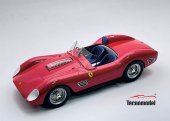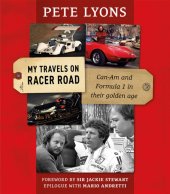Categories
RECENT ARRIVALS:New-Restock
COMING SOON: New & Restock
New Model Announcements->
25% OFF Select Models
50% OFF - 1/43 Spark Model
In Stock - 1/12 scale Models
In Stock - 1/18 BBR
In Stock - 1/18 Spark Model
In Stock - 1/18 Tecnomodel
In Stock - 1/18 TopSpeed
In Stock - 1/43 Spark Model
In Stock - 1/43 Tecnomodel
In Stock - 1/43 TSM Model
AUTOMOBILSPORT
Gift Certificates
2023 24 Hours of Le Mans->
2023 / 2024 Annuals
2023/24 NEW MODEL ANNOUNCEMENTS->
BOOKS - Estate Collection
BOOKS - Recent Additions
In Stock - 2022 Formula 1->
BOOKS - Future Release
Display Cases->
In Stock - 2021 F1
Vintage F1 Clothing
Estate Artwork
Artwork->
Books->
|_ Biographies
|_ Road Racing
|_ Annuals->
|_ Formula 1
|_ Indianapolis
|_ Art Books
|_ Marque
|_ Novels
|_ Other Books
|_ Children's Books
|_ Space Flight
DVDs->
Models by Manufacturer->
2022 NEW MODEL ANNOUNCEMENTS!->
Ken Miles
BURIED TREASURE?
Estate Classics->
Memorabilia->
Secondary Market->
CLEARANCE SALE!->
Calendars
Specials ...
New Products ...
Featured Products ...
All Products ...
COMING SOON: New & Restock
New Model Announcements->
25% OFF Select Models
50% OFF - 1/43 Spark Model
In Stock - 1/12 scale Models
In Stock - 1/18 BBR
In Stock - 1/18 Spark Model
In Stock - 1/18 Tecnomodel
In Stock - 1/18 TopSpeed
In Stock - 1/43 Spark Model
In Stock - 1/43 Tecnomodel
In Stock - 1/43 TSM Model
AUTOMOBILSPORT
Gift Certificates
2023 24 Hours of Le Mans->
2023 / 2024 Annuals
2023/24 NEW MODEL ANNOUNCEMENTS->
BOOKS - Estate Collection
BOOKS - Recent Additions
In Stock - 2022 Formula 1->
BOOKS - Future Release
Display Cases->
In Stock - 2021 F1
Vintage F1 Clothing
Estate Artwork
Artwork->
Books->
|_ Biographies
|_ Road Racing
|_ Annuals->
|_ Formula 1
|_ Indianapolis
|_ Art Books
|_ Marque
|_ Novels
|_ Other Books
|_ Children's Books
|_ Space Flight
DVDs->
Models by Manufacturer->
2022 NEW MODEL ANNOUNCEMENTS!->
Ken Miles
BURIED TREASURE?
Estate Classics->
Memorabilia->
Secondary Market->
CLEARANCE SALE!->
Calendars
Specials ...
New Products ...
Featured Products ...
All Products ...
Shop by Manufacturer [more]
- Acme Trading Company
- Action
- Almost Real
- Art Model
- AUTOart
- AUTOMOBILSPORT
- Bang
- BBR
- BBR Competition Series
- Bburago
- Behemoth Publishing
- Best
- Bizarre
- Brumm
- CanAm
- Carousel 1
- CarTech Auto Books & Manuals
- CMC Classic Model Cars
- Coastal 181
- Craig Warwick
- Dalton Watson Fine Books
- David Bull Publishing
- David Gray
- Duke Video
- Exoto
- Fly
- GMP
- Goodwood
- Graham Turner
- Greenlight
- GT Spirit
- Haynes
- IXO
- IXO America
- Jim Swintal
- Kyosho
- La Mini Miniera
- LeMans Miniatures
- LookSmart
- Maisto
- Masterpiece Collection
- Mattel Hot Wheels
- Michael Turner
- Minichamps
- Motorfilms
- Nicholas Watts
- Nicolas Trudgian
- Onyx
- Paragon
- Quartzo
- Racemaker Press
- Rare Sportsfilms
- Real Art Replicas
- Redline
- Replicarz Exclusives
- Revell
- Robert Taylor
- Solido
- Spark Model
- Tecnomodel
- The Masterpiece Collection
- Top Model
- TopSpeed
- TSM Model
- UT Models
- Veloce
- Vitesse
- X-Factor
Currencies
Copyright © 2025 The Motorsport Collector



